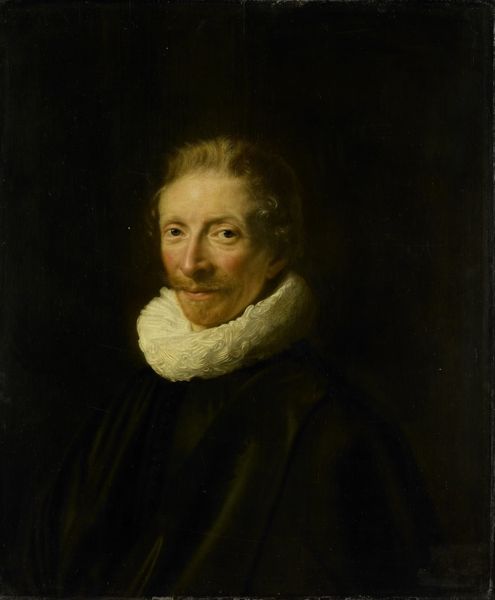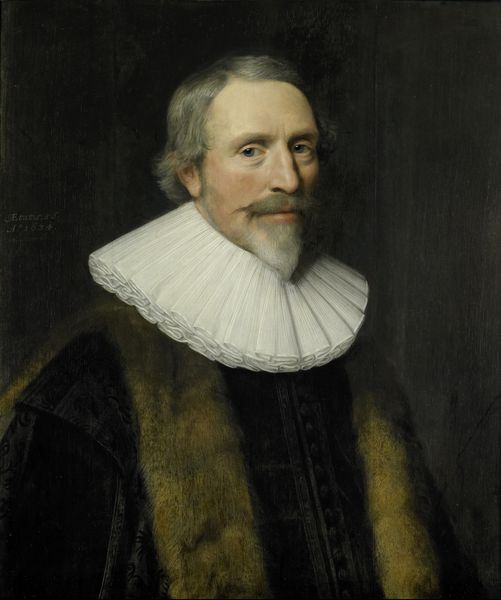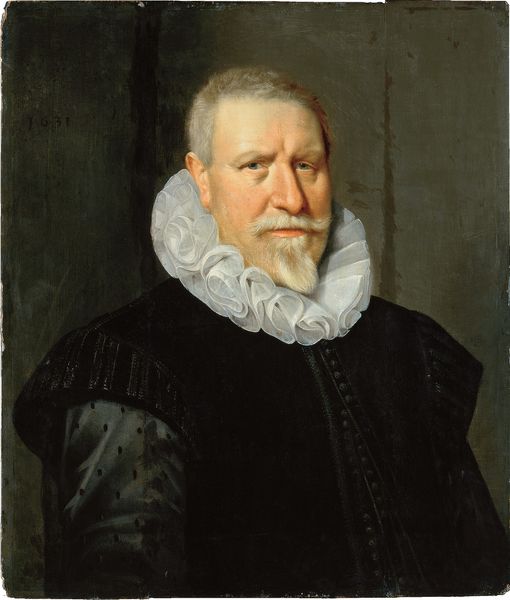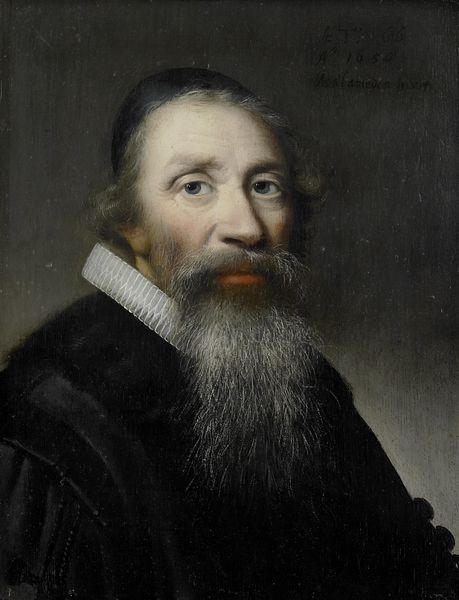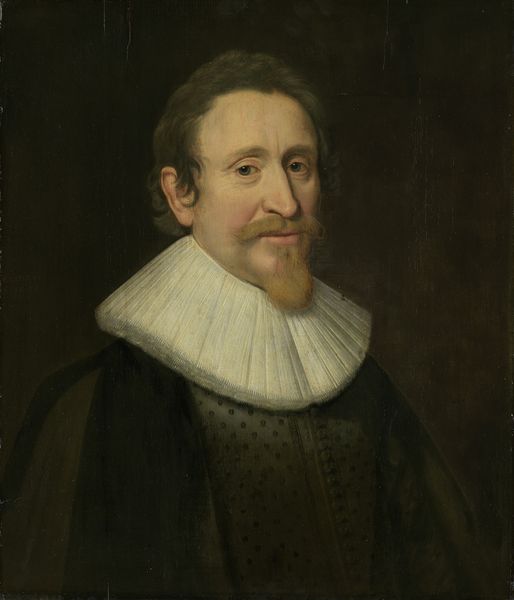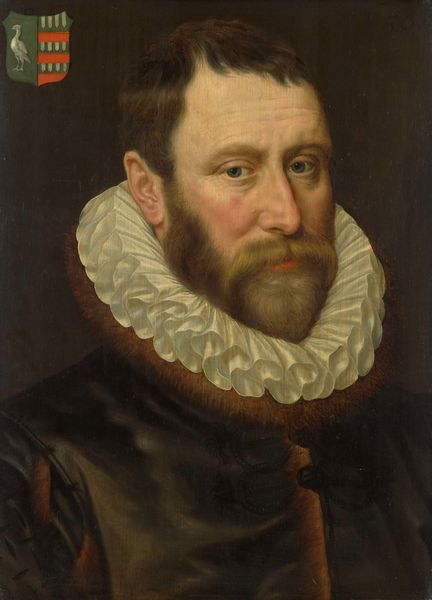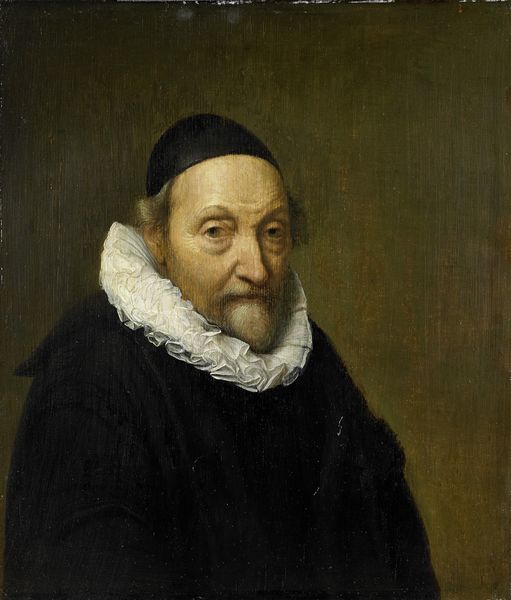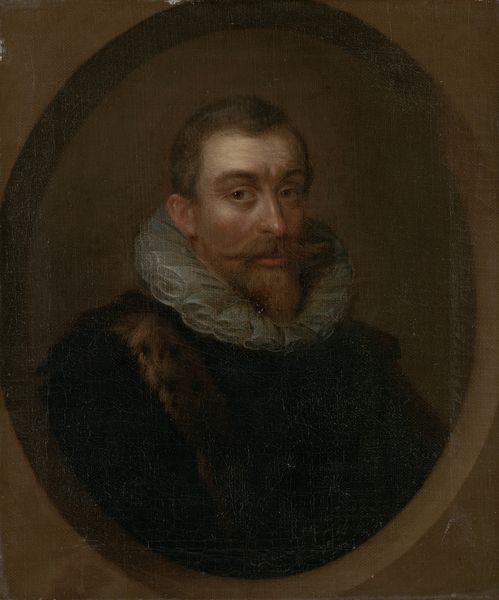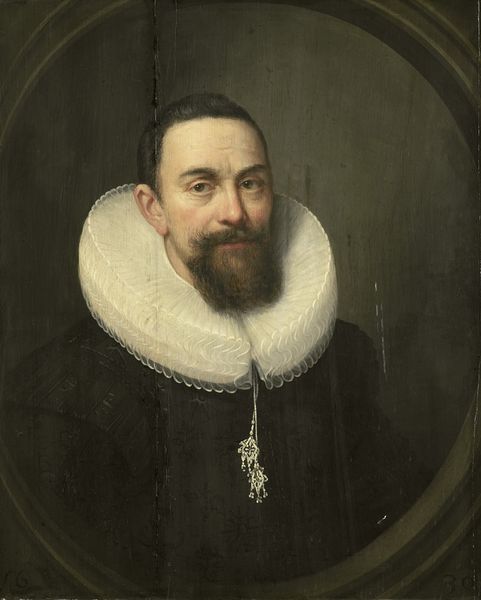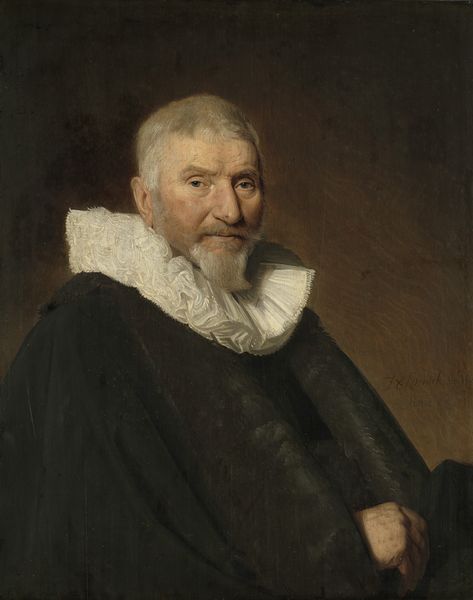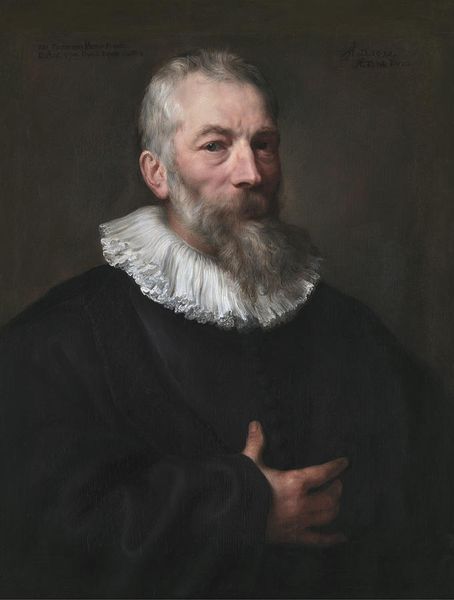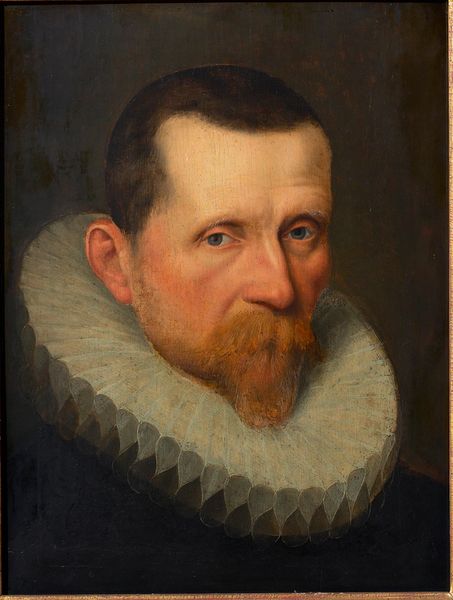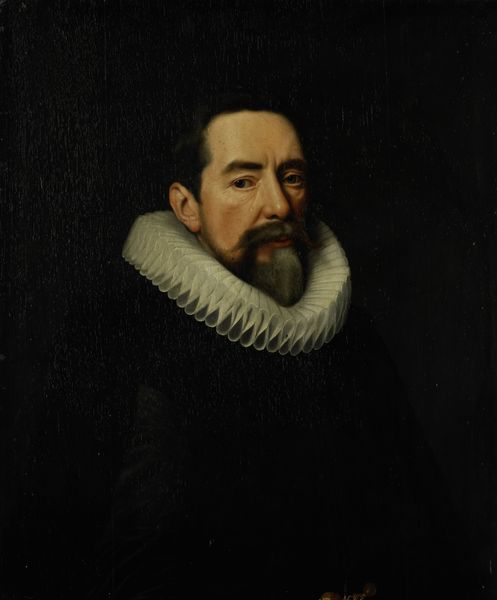
painting, oil-paint
#
portrait
#
baroque
#
dutch-golden-age
#
painting
#
oil-paint
#
realism
Dimensions: support height 71.5 cm, support width 60.7 cm, support thickness 1.7 cm, outer size depth 7.0 cm
Copyright: Rijks Museum: Open Domain
Editor: Here we have Michiel Jansz. van Mierevelt’s "Portrait of a Man," created after 1625. The stern expression and dark clothing contrasted with the fur trim feel very deliberate. What do you see in this piece beyond just a portrait? Curator: I see a powerful statement about class and social hierarchy in 17th-century Netherlands. Look closely at the man’s clothing and the elaborate ruff. What do those details tell us? Editor: Well, the fur trim definitely suggests wealth and status. The ruff seems almost restrictive, perhaps indicating a certain adherence to social norms? Curator: Exactly. These visual cues were carefully constructed to communicate a specific identity, and more broadly, an ideology. This wasn't just about representing a person, but solidifying a place within the rigid social structures of the time. We must acknowledge the colonial wealth that enabled the Dutch Golden Age, including commissions for portraits such as this. Where does the man's power truly stem from? Editor: So you're suggesting this portrait also tells a story about the systems of power and privilege inherent in Dutch society? It's not *just* about him as an individual. Curator: Precisely! It prompts us to consider who gets to be immortalized in art and whose stories remain untold. Whose labor produced this man’s garments and secured his comfort? Whose voices were silenced to maintain this social order? Editor: That’s a really powerful way to look at it. It makes me think about how we often accept these portraits at face value, without questioning the bigger picture. Curator: The point is that by engaging with the art critically and thinking intersectionally, we gain insight into the broader sociopolitical forces at play, both then and now. Editor: Thank you; I appreciate that contextualization. It reframes my whole perception of this artwork and its value.
Comments
No comments
Be the first to comment and join the conversation on the ultimate creative platform.
